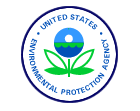
| National Risk Management Research Laboratory | ||

|
|
|||||||||
|
ZenoGem ® Biological and Ultrafiltration TechnologyClick here for information about Portable Document File (PDF) Formats. or Click here to directly download the Acrobat Reader. (To view the PDF, it is recommended that you use the latest version of Acrobat Reader.) ZenoGem ® Biological and Ultrafiltration Technology (pdf-3.7Mbytes) U.S. EPA Superfund Innovative Technology Evaluation SITE) Program Zenon Environmental Inc. (Zenon), of Burlington, Ontario, Canada has developed an innovative wastewater treatment technology called the ZenoGem ® technology. The ZenoGem ® technology integrates biological treatment with membrane-based ultrafiltration to treat wastewater with high concentrations of organic contaminants that cause elevated concentrations of chemical oxygen demand (COD). The system reduces organic contaminants in wastewater to below regulatory limits, improves effluent quality, reduces sludge production, resists contaminant shock-loading, and, by maintaining a long sludge retention time, reduces the size of the bioreactor necessary for performing bioremediation. The Superfund Innovative Technology Evaluation (SITE) demonstration occurred between September and December 1994 at the Nascolite Superfund site (Nascolite) in Millville, Cumberland County, New Jersey. In 1985, a remedial investigation and feasibility study at the Nascolite site revealed that groundwater was contaminated with methyl methacrylate (MMA), volatile organic compounds (VOC), and heavy metals. The basic components of the ZenoGem ® system are an influent-holding equalization tank, a bioreactor, an air blower, a pH buffer tank, a nutrient solution tank, an ultrafiltration module, optional off-gas carbon filters, optional permeate carbon filters, and feed, process, and metering pumps. The system components are computer-controlled and equipped with alarm indicators to notify the operator of mechanical and operational problems. During the SITE demonstration, critical and noncritical measurements were evaluated. Critical measurements consisted of sample analyses and process measurements that directly impacted meeting the project’s primary technical objective. Critical measurements included collection of liquid and air samples for MMA and VOC analyses; liquid samples to evaluate COD; and flow rate measurements of the influent and effluent liquid streams. Noncritical, or system condition measurements, provided information on operating ranges, reliability, variability, cost-effectiveness, and full-scale remediation potential of the technology. The results of the sample analyses indicated that the technology consistently surpassed the demonstration goal of 95 percent reduction for MMA
(99.99 + 0.01 percent) and COD (96.8 + 5.0 percent). The high removal efficiency for MMA and reduction of COD was maintained after a 3-fold concentration was delivered to the system (shock-loading test), suggesting that a sudden increase in influent MMA and COD concentration had little noticeable effect on the technology's performance. Reductions of greater than 97 percent were noted in all VOCs reported methylene chloride, trichloroethene, benzene, toluene, and o+p xylenes). Based on extrapolation from the air sample concentration data and the flow meter readings, the total volatilization of MMA and VOCs from the system calculated less than 0.10 percent of the total MMA and VOC mass treated during the demonstration. No major operating problems occurred during the SITE demonstration period; no significant changes in technology performance were observed during the SITE demonstration. EPA SITE Program personnel prepared this Innovative Technology Evaluation Report (ITER) to present the results of the SITE Program demonstration. The ITER evaluates the ability of the ZenoGem ® technology to treat contaminated groundwater based on the demonstration results. Specifically, this report discusses performance and economic data collected by SITE Program personnel, and also presents case studies and additional information about the technology provided by Zenon. Abstract
Posted April 3, 2000
|
|
|
|
|
|